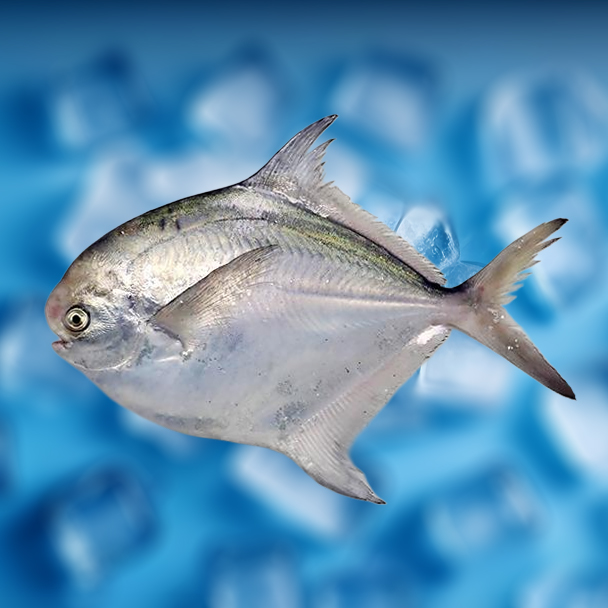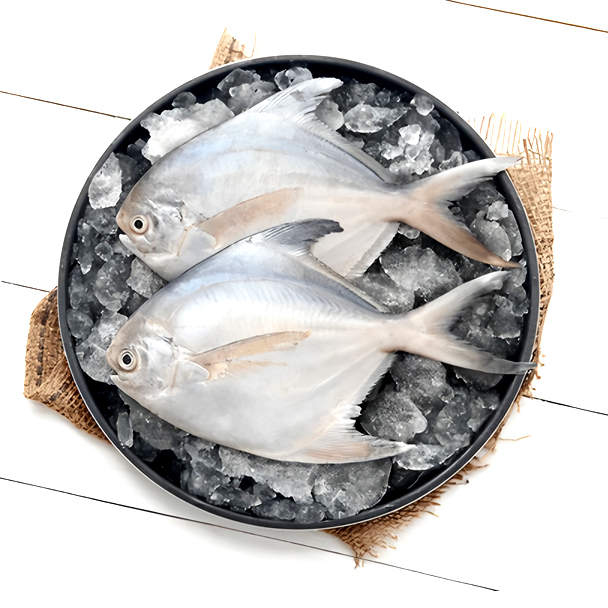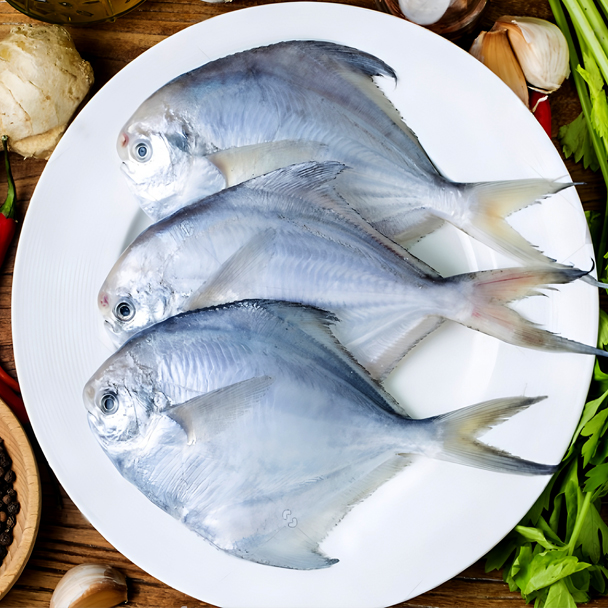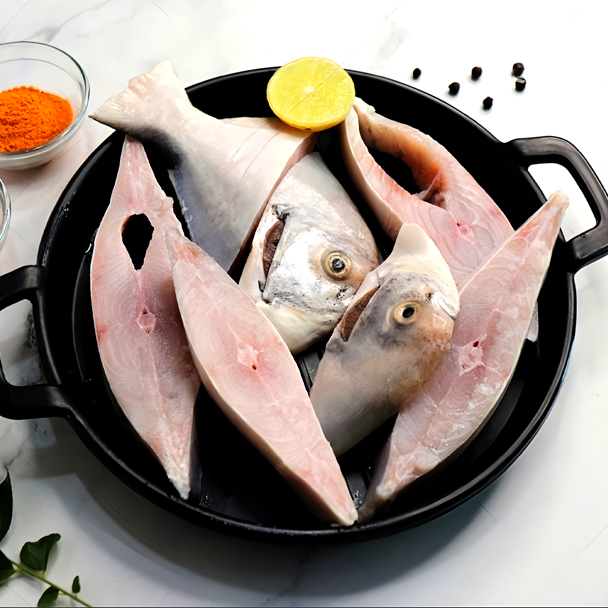








The Japanese Silver Pomfret (scientific name: *Pampus argenteus*) belongs to the order Perciformes and the family Stromateidae. It is an important economic fish species widely distributed in the southern coastal waters of Japan, the East China Sea, and the western Pacific Ocean. Its body is round and laterally compressed, with a shiny silver-white surface and semi-transparent fins, giving it an elegant appearance. Adult fish typically measure 20–35 cm in length, with the largest individuals reaching up to 40 cm, making them highly recognizable and visually appealing.
Japanese Silver Pomfret mainly inhabits the upper to middle layers of coastal waters, typically found in sandy or muddy seabeds at depths of 15–100 meters. It is a schooling fish with a gentle nature, primarily feeding on plankton, small crustaceans, and fish eggs. Thanks to its fast growth and adaptability, it has seen increasing development in aquaculture in recent years.
The fish’s flesh is white, tender, and boneless, with a moderate fat content. It is rich in high-quality protein and various minerals, making it highly favored by consumers. In Japanese cuisine, the Silver Pomfret is commonly prepared through salt-grilling, drying, or simmering, making it suitable for both home cooking and upscale dining. It is regarded as a nutritious and delicious premium seafood ingredient.
